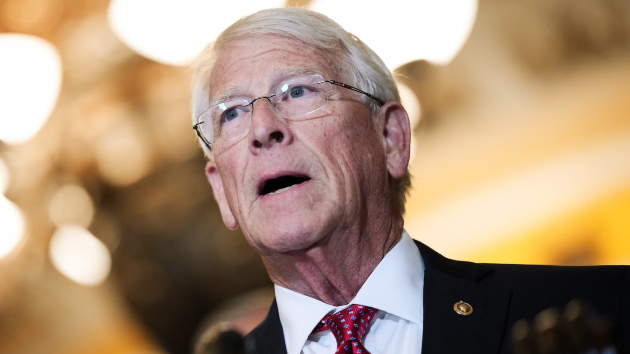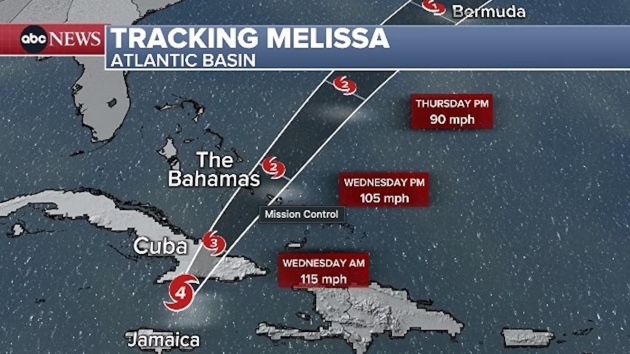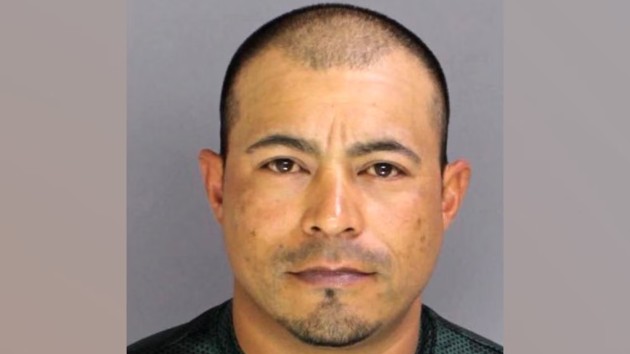
(WASHINGTON) — With critical food assistance benefits set to run out Saturday, Senate Majority Leader John Thune on Wednesday said he is talking with President Donald Trump about the shutdown as lawmakers appear sympathetic, but still entrenched.
The Department of Agriculture said earlier this week that Supplemental Nutrition Assistance Program benefits, which serve roughly 42 million low-income Americans, will not be issued on Nov. 1 amid the ongoing government shutdown.
On Tuesday night as he traveled to South Korea, Trump signaled his administration may find a solution to help fund SNAP, saying “we’re going to get it done,” without offering any details on how.
At the same time, Trump blamed Democrats for putting Americans at risk of losing critical federal food assistance this weekend.
“The Democrats have caused the problem on food stamps … because all they have to do is sign, and, you know, they sign, I’ll meet with them,” Trump said.
Asked about Trump’s SNAP benefits comments, Thune told reporters on Wednesday that he spoke to Trump on Tuesday, but didn’t have insight into what his comments meant.
“I think that what he is saying consistently is ‘Open up the government and then we’ — and that’s the way to fund SNAP,” Thune said.
Republican Sen. Josh Hawley has a new bill that would fund SNAP during the shutdown. While several Republican senators support it, Thune has appeared lukewarm about bringing it to the floor.
Asked if Trump’s comments were an endorsement of bills like Hawley’s that would fund SNAP during the shutdown, Thune said he wasn’t sure if that’s what Trump was referring to.
“I think the message that he and the rest of the White House, including JD yesterday, have delivered pretty clearly is ‘Open up the government and that’s the way to fund SNAP and everything else.’ If he’s got something else he’s thinking about, I’ll certainly be open to listening to that,” Thune said.
On Wednesday morning, House Speaker Mike Johnson warned that the impacts of the government shutdown this week — including a possible food crisis as well as missed paychecks for federal workers and air traffic controllers — are “getting really tough for the American people,” placing the onus squarely on Democrats.
“The Democrats are coming near now to a cliff that they will not be able to turn back from,” Johnson said at a news conference in the Capitol. “You’ve got families and children that rely upon SNAP benefits that are going to go hungry here at the end of the week.”
As Democrats continue their fight over health care subsidies as the Nov. 1 open enrollment date approaches, Trump said Tuesday night that he would work with Democrats — as long as they vote to fund the government.
“I’d say, open up the government and we’ll work it out,” Trump told reporters.
Democrats are working to balance their health care demands and find solutions for SNAP, with Democratic Sen. Ben Ray Luján expected to attempt to get the Senate to unanimously pass legislation that would direct the USDA to release available contingency funds to ensure benefits under SNAP and the Women, Infants, and Children (WIC) program continue during the shutdown.
Luján’s bill is co-sponsored by every Democrat in the Senate, but does not have any Republican co-sponsors. Because it’s being put on the floor by Democrats, the only way the bill could pass is if every senator supports it — meaning it will likely fail as a result.
“Right now, we’re staring down the barrel at two crises at once. A health care crisis and a hunger crisis,” Senate Minority Leader Chuck Schumer said in a press conference Wednesday afternoon.
“We don’t want to pit health care and food. Thank you. We think you can have both,” he later shouted.
Schumer has continued to call on Republicans to “sit-down and negotiate with us” to reopen the government and address the health care crisis.
Thune told reporters Wednesday morning that discussions over a path out of the shutdown have “ticked up significantly” and that he’s “hopeful” that something fruitful will soon emerge.
“It’s ticked up significantly,” Thune said of talks among rank-and-file members. “And hopefully that’ll be a precursor of things to come. But yeah, there’s a lot of higher-level conversation.”
Thune stressed that conversations are going on among rank-and-file members and not among leadership.
“There are a lot of rank-and-file members that continue to, I think, want to pursue solutions and to be able to address the issues they care about, which is including health care, which as I just said right there we are willing to do, but it is obviously contingent upon them opening up the government.”
ABC News’ Megan Mistry, Isabella Murray and Lalee Ibssa contributed to this report.
Copyright © 2025, ABC Audio. All rights reserved.









